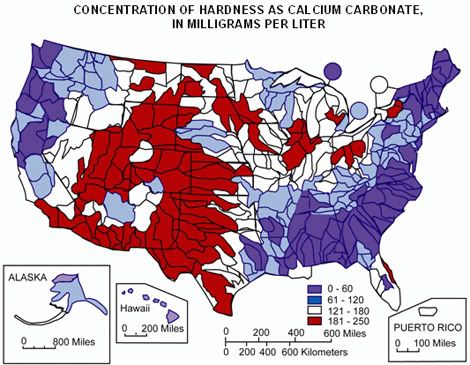I’ve had to put most of my original cloth diaper stash to rest. Or at least it’s temporarily retired until we figure out how to resolve our hard water issues. Stinky like sulphur and loaded with minerals and sediment that eat away at our sink and tub fixtures, I should have anticipated that our water would present some challenges with cloth diapers. We also have an HE frontloader which is wonderful at conserving water but never truly rinses our diapers clean.
Though we’ve experimented with every wash cycle and detergent imaginable and have tried various water softeners in the wash water, the ammonia stinkies keep coming back. Every time I think I’ve finally come up with THE cycle, the odor returns and my son’s diaper zone becomes red and irritated again.
So, sadly, the following diapers--that have been the biggest offenders--will be resting in peace:
What we’re using now:
With the exception of the fleece liners, the common theme here is bamboo, cotton and hemp. The flats wash nice and clean. The prefolds can be boiled when all else fails. The bamboo is holding its own. The natural fibers have fared better for us though my son is very sensitive to moisture so we have to change him even more frequently. We also still make use of fleece liners to have at least a partial barrier between him and the moisture. The only natural fiber that we have found we need to steer clear of is wool since my son, sadly, has an allergic reaction to it. I’m still clinging on to the hope that it may be the type of wool used in our specific cover and may try another brand just to be sure but the cost is a little daunting.
I definitely miss the ease and stay-dry nature of my pockets. We also have yet to find the best solution/folds for my son’s build (long torso, extra chunky thighs and generous waist) with the more traditional flats and prefolds but we’re committed to working on it. The flats are most conveniently used as an insert in the bamboo pockets paired with 1 bamboo insert for overnights right now.
In the meantime, we’re having our water tested and hope to find an affordable way to address our hard water issues. Keeping our fingers crossed and our full stash waiting in the wings!
Though we’ve experimented with every wash cycle and detergent imaginable and have tried various water softeners in the wash water, the ammonia stinkies keep coming back. Every time I think I’ve finally come up with THE cycle, the odor returns and my son’s diaper zone becomes red and irritated again.
So, sadly, the following diapers--that have been the biggest offenders--will be resting in peace:
- 14 Kawaii Pockets
- 3 Happy Heinys Pockets
- 3 bumGenius 4.0s (2 Snaps; 1 Hook & Loop)
- 1 Rumparooz
What we’re using now:
- 5 Kawaii Bamboo Pockets w/10 Bamboo Inserts (these diapers are the only survivors from the original stash)
- 6 Swaddlebees Flats
- 6 Osocozy Unbleached Prefolds; Size 2
- 3 Econobum Prefolds
- 2 Thirsties Duo Covers; Size 2
- 3 Econobum Covers
- 10 Bummis Fleece Liners & an Assortment of Liners Cut from Old PJs
With the exception of the fleece liners, the common theme here is bamboo, cotton and hemp. The flats wash nice and clean. The prefolds can be boiled when all else fails. The bamboo is holding its own. The natural fibers have fared better for us though my son is very sensitive to moisture so we have to change him even more frequently. We also still make use of fleece liners to have at least a partial barrier between him and the moisture. The only natural fiber that we have found we need to steer clear of is wool since my son, sadly, has an allergic reaction to it. I’m still clinging on to the hope that it may be the type of wool used in our specific cover and may try another brand just to be sure but the cost is a little daunting.
I definitely miss the ease and stay-dry nature of my pockets. We also have yet to find the best solution/folds for my son’s build (long torso, extra chunky thighs and generous waist) with the more traditional flats and prefolds but we’re committed to working on it. The flats are most conveniently used as an insert in the bamboo pockets paired with 1 bamboo insert for overnights right now.
In the meantime, we’re having our water tested and hope to find an affordable way to address our hard water issues. Keeping our fingers crossed and our full stash waiting in the wings!










